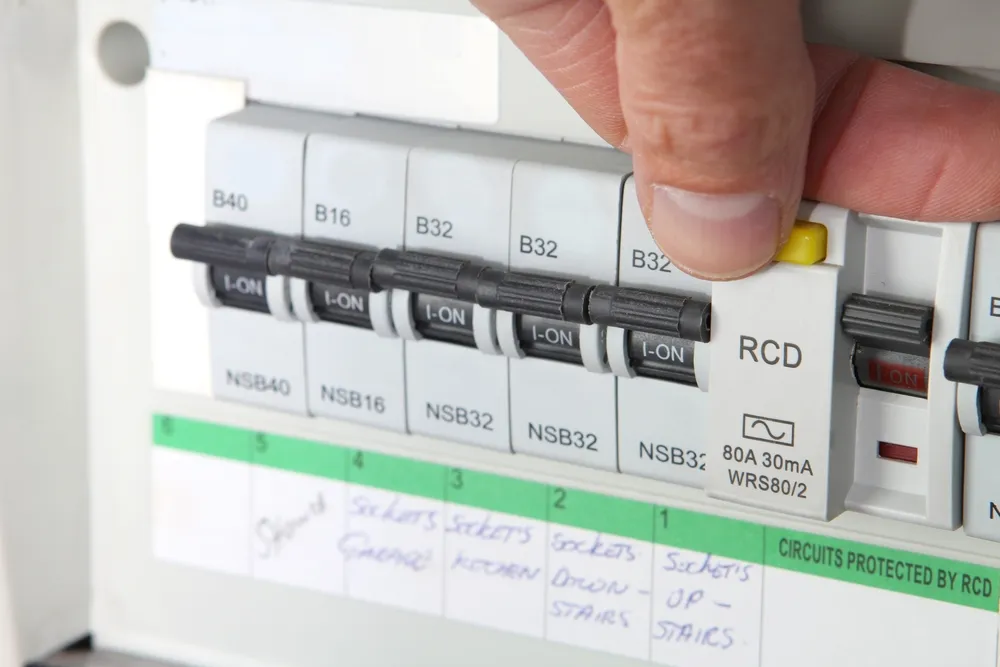
An RCD, or Residual Current Device, is a crucial safety mechanism that's engineered to protect you from potentially deadly electrical shocks if you come into contact with a live element like an exposed wire. It can also offer some defence against electrical fires. RCDs provide a degree of personal protection that cannot be matched by conventional fuses and circuit breakers. In this blog post, we will explain how RCDs work in more detail and how they keep you safe.
What is a Residual Current Device?
It's a sensitive safety apparatus that automatically shuts off the electricity when it detects a fault.
RCDs are primarily designed to shield against the dangers of electrocution and fire triggered by earth faults. For instance, if you accidentally touch the exposed live wires when cutting through a cable while mowing the lawn or if a faulty appliance overheats, causing electrical current to flow to the earth.
How does an RCD work?
An RCD continuously supervises the electric current passing through one or more circuits it's tasked to protect. If it senses electricity flowing along an unintended path, like through a person who's touched a live component, the RCD will promptly switch off the circuit, substantially reducing the likelihood of death or severe injury.
What are the main types of RCDs?
RCDs can offer protection from electric shock in potentially risky areas like bathrooms and gardens, and there are different types of RCDs available to ensure maximum safety.
- Fixed RCDs: Installed in the consumer unit (fusebox), they can provide protection to individual or groups of circuits. They offer the highest level of protection, safeguarding all wiring, sockets on a circuit, and any connected appliances.
- Socket-Outlet RCDs: These are special sockets with a built-in RCD that can replace a standard socket-outlet. They only provide protection to the person in contact with the equipment plugged into the special socket-outlet.
- Portable RCDs: They plug into any standard socket-outlet, and an appliance can then be plugged into the RCD. They're beneficial when fixed or socket-outlet RCDs are unavailable. However, they only protect the person in contact with the equipment plugged into the portable RCD.
As for reliability, fixed RCDs are found to be about 97% reliable, which improves with regular testing. They will reduce the risk of electrical shock and can protect your home from fire caused by faulty wiring or appliances.
Remember, while RCD protection mitigates the risk of electric shock, caution is still necessary. Ensure your wiring is checked at least once every 10 years for safety. Test all fixed and socket RCDs every three months and portable RCDs every time you use them. In case of a malfunction during a test, seek advice from a registered electrician.
Since July 2008, almost all circuits in new or rewired homes in the UK are required to include an RCD as per the latest edition of BS 7671.
As for costs, a plug-in RCD can cost as little as £10, while a fixed RCD will be more expensive but provide better protection. Installation costs can vary, so get multiple quotes before proceeding.
To verify if you have fixed RCD protection, look in your consumer unit for a device with a 'T' or 'Test' marked pushbutton. This is an RCD. If an RCD is installed, there should also be a label stating 'test quarterly' near or on the consumer unit.

![Logo for [object Object]](/images/logo/text.svg)